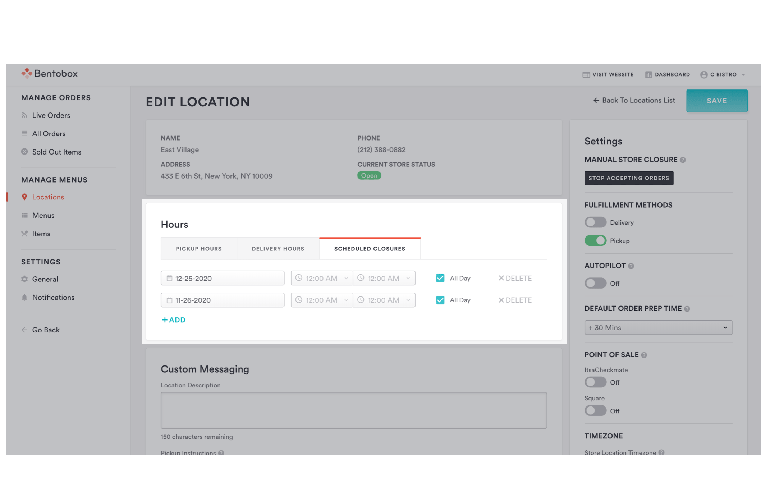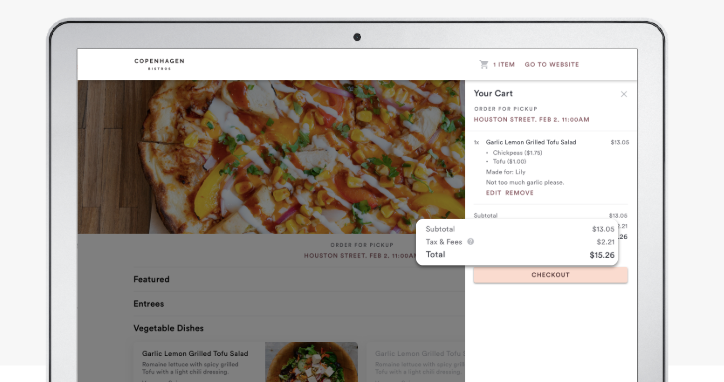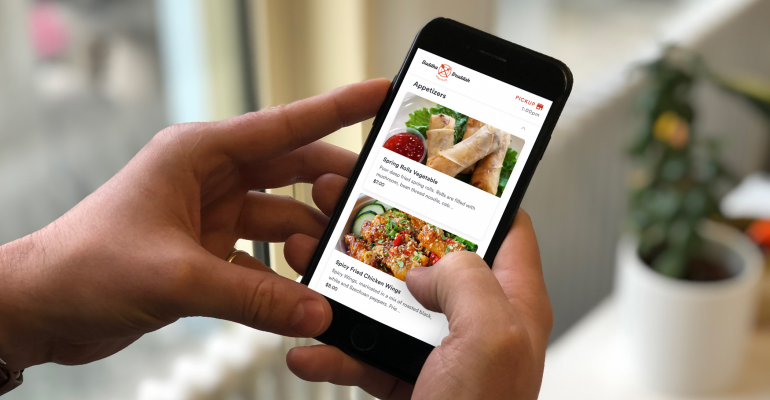When BentoBox launched in 2013, it aimed to help restaurants take control of their digital identity, starting with their websites. As the restaurant industry has changed, BentoBox has added new features. Today, in response to the industry’s focus on off-premise, BentoBox is launching Bento Ordering.
 BentoBox founder Krystle Mobayeni, left, increasingly heard from restaurant owners that working with third-party delivery companies was unsustainable even though customers expect restaurants to cater more and more to their off-premise needs. A major complaint: Restaurants on third-party marketplaces like Grubhub and DoorDash can take up to 30% of sales without sharing customer information.
BentoBox founder Krystle Mobayeni, left, increasingly heard from restaurant owners that working with third-party delivery companies was unsustainable even though customers expect restaurants to cater more and more to their off-premise needs. A major complaint: Restaurants on third-party marketplaces like Grubhub and DoorDash can take up to 30% of sales without sharing customer information.
Bento Ordering is certainly not the first off-premise service for restaurants but being late to the game was an asset in this case, said Mobayeni.
"What we were able to do is really listen to the considerations and the pain points that [operators] had, not only with the marketplaces and the bigger players, but also with the smaller, more independent options that have emerged.
“[We've] been able to take that feedback and really create a better product where editing your menu is easier, the way it looks is more on-brand, the way that the customer experience it is more seamless and just more on-brand for the restaurant," she said.
Orders placed through Bento Ordering incur a flat fee of $.99, which restaurants can pay or pass on to their customers.
Bento is focusing on pick-up for now, which still makes up over 90% of off-premise operations. If a restaurant has its own delivery staff, it can offer delivery using Bento Ordering. Mobayeni is exploring potential last-mile delivery partners and hopes to introduce those into the Bento system in the next quarter or two.

Bento Ordering scheduling
An important differentiator between most third-party marketplace orders and those placed through Bento, is that Bento orders come directly through a restaurant's website, said Mobayeni. Restaurant operators know who the customer is and where they came from, such as from a Facebook post or a marketing email. Bento also offers promo codes to restaurants so they can obtain and attract customers to order off of a restaurant's site.
"We're really conscious of [competing with third-party marketplaces] and thinking about not just offering the online ordering platform, but we are thinking of ways that we can actually help them drive traffic," said Mobayeni.
Seattle-based Buddha Bruddah restaurant has been using Bento Ordering in beta since late September. During that time, the restaurant has received over 300 orders through the service, with an average order of about $33, said co-owner Mark Mizer. For him, part of the appeal of Bento Ordering is access to the analytics that the company provides.
"When you have that [data], you can properly advertise," said Mizer, who has been a customer of BentoBox since 2018. "With all these other companies, you don't have access to that information."

Orders from Bento Ordering incur a $.99 fee, which can be passed on to customers.
Analytics has been a big part of BentoBox's selling point for a while now.
The company started as a way to help restaurants enter the digital age at a time when many restaurant websites were slapped together and difficult to navigate, or worse, auto-played music. Mobayeni used her digital product design background to modernize and streamline how restaurants represent themselves online. The company has since added new features, like the ability to sell gift cards and take control of local listings like those on Google. Recently, BentoBox has relieved another source of restaurant website anxiety— their website designs are ADA compatible.
"I think in the beginning [BentoBox] was very much about getting the basics at a good cost," said Mobayeni. "Making sure that [restaurants] had control, that they had an online presence that reflected the brand and just had basic functionality was really, really important. And from there, the two things [that we have seen] become much more important are first, access to information and data and [second], making sure that it is provided in a way that's digestible and actionable."
To that end, BentoBox started offering weekly and monthly data insights to restaurants. With Bento Ordering, Mobayeni aims to give restaurants similar access to customer and trend data.
Even with these services, Mobayeni isn't recommending restaurants opt out of third-party orders completely. For its part, Buddha Bruddah is staying on sites like Grubhub even though by being a part of these marketplaces its owners feel they are building these third-party marketplaces' businesses, not their own brand. Some customers just prefer a specific ordering app, said Mizer.
"I don't think that the third parties will completely go away,” said Mobayeni. “I do think that they'll remain as a way for guest [to] discover [new restaurants and], as another marketing or acquisition channel like Facebook or Google," said Mobayeni. "I think that what's really important for restaurants is to understand how — when they get a new customer from one of those third-parties and they have a great experience — to convert that customer into a loyal and direct customer."
Contact Gloria Dawson at [email protected]
Follow her on Twitter: @GloriaDawson





